In 1236 the Dominicans were assigned the place for the construction of the monastery, which at that time was outside the city walls. Around 1265 the nave of the church was completed and it was consecrated to St. Peter and Paul. The choir was added 70 years later. The monastery building itself encloses a trapezoidal inner courtyard, it was built parallel to the church, extended and redesigned several times. After the dissolution of the order in 1784 by Joseph II, the buildings served as a button factory, storehouse, theatre, cinema and fire depot, among other things. Extensive restoration work began in 1961, during which the original basilica was also restored. Numerous medieval wall paintings were restored. In the northern side aisle, the Gozzofresco, named after its founder, depicts the struggle of the ecclesia against the synagogue, the Last Supper and the only surviving depiction of the town judge.
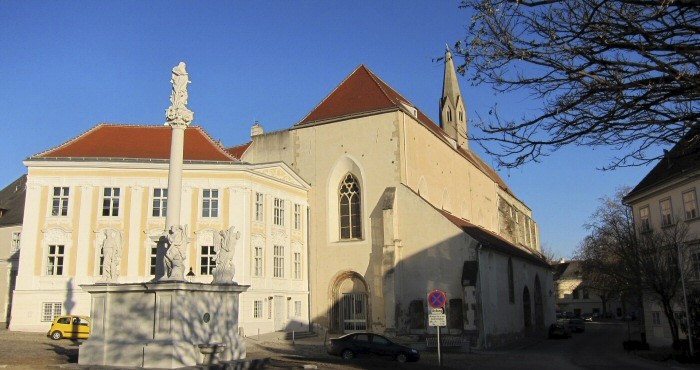
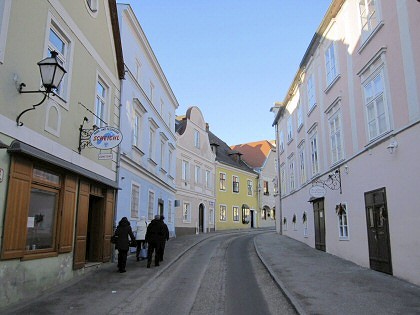
From Steinertor the Schmidgasse leads to Körnermarkt (grain market).
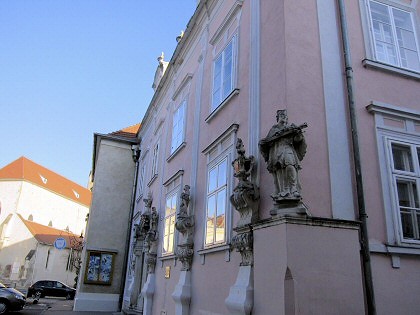
At the corner house Schmidgasse / Körnermarkt greets Johannes Nepomuk.
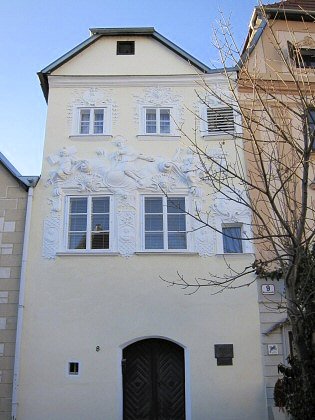
The "Mesnerhäusl" with baroque Nepomuk stucco.
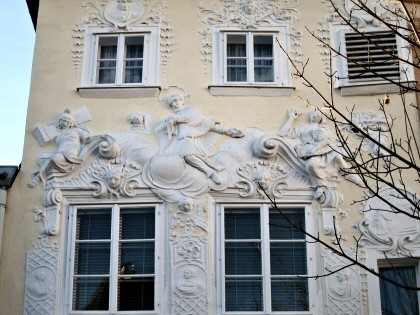
The "Mesnerhäusl" dates back to 1530 and was attached to the city wall. It was extended and rebuilt in the Renaissance period. In 1743 the stuccoer Leopold Michael Perger from Weitra bought the house.
On the front you can see the apotheosis of St. Nepomuk with the allegories of Fortitudo (helmet, column) and Caritas together with busts.
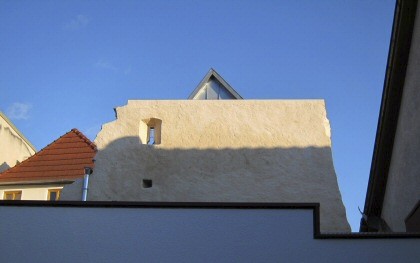
At the back of the house (towards the moat) a part of the town wall is still preserved.
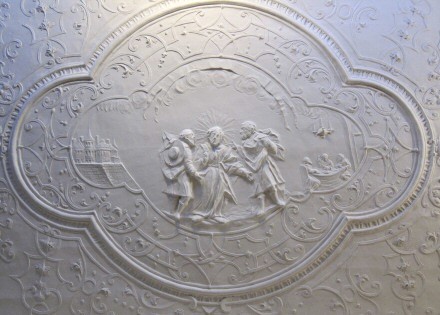
In the house there is a beautiful stucco ceiling. The cut-out shows the way of Christ to Emmaus. On the left is Jerusalem and on the right the meal of Emmaus.


